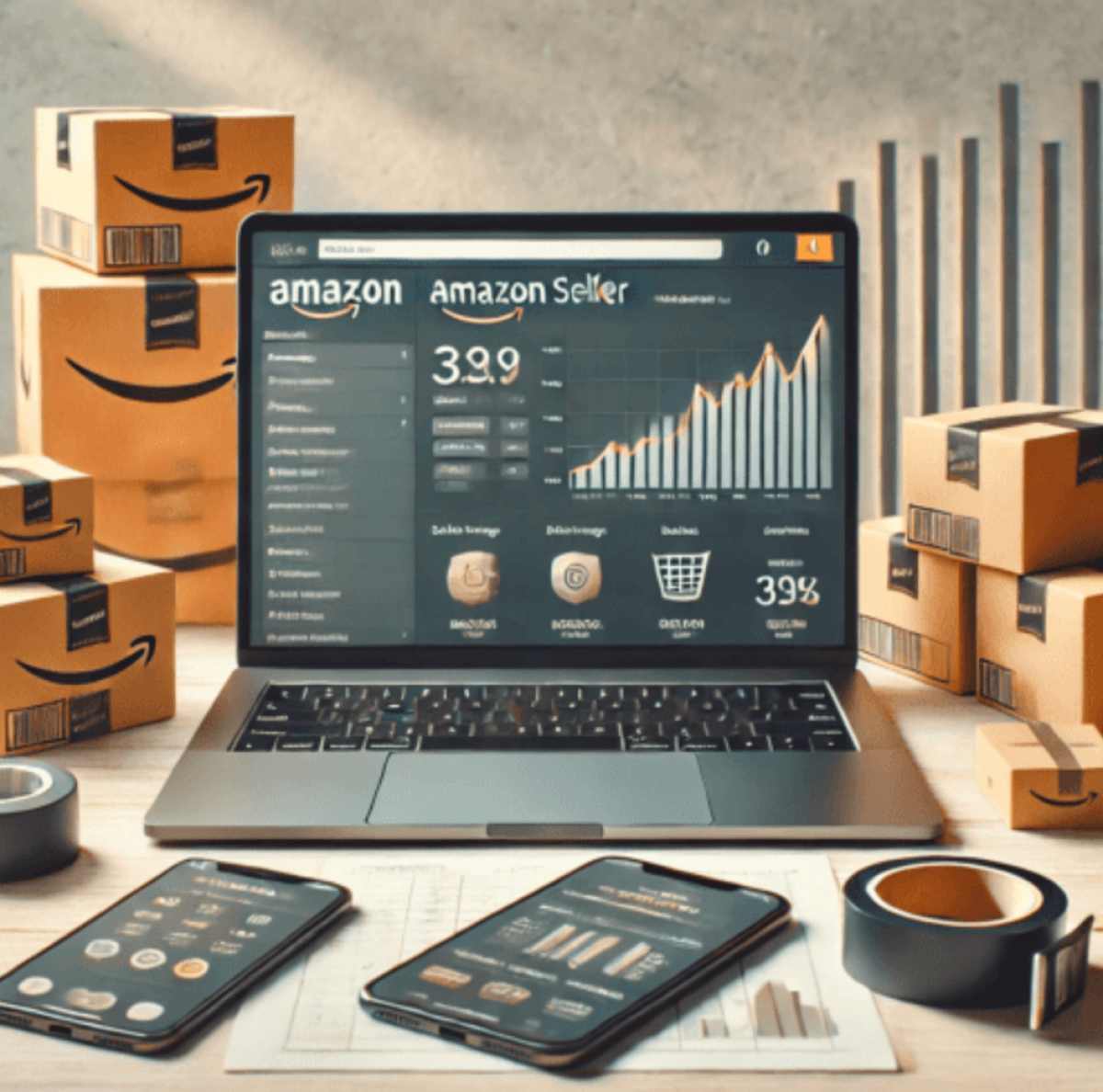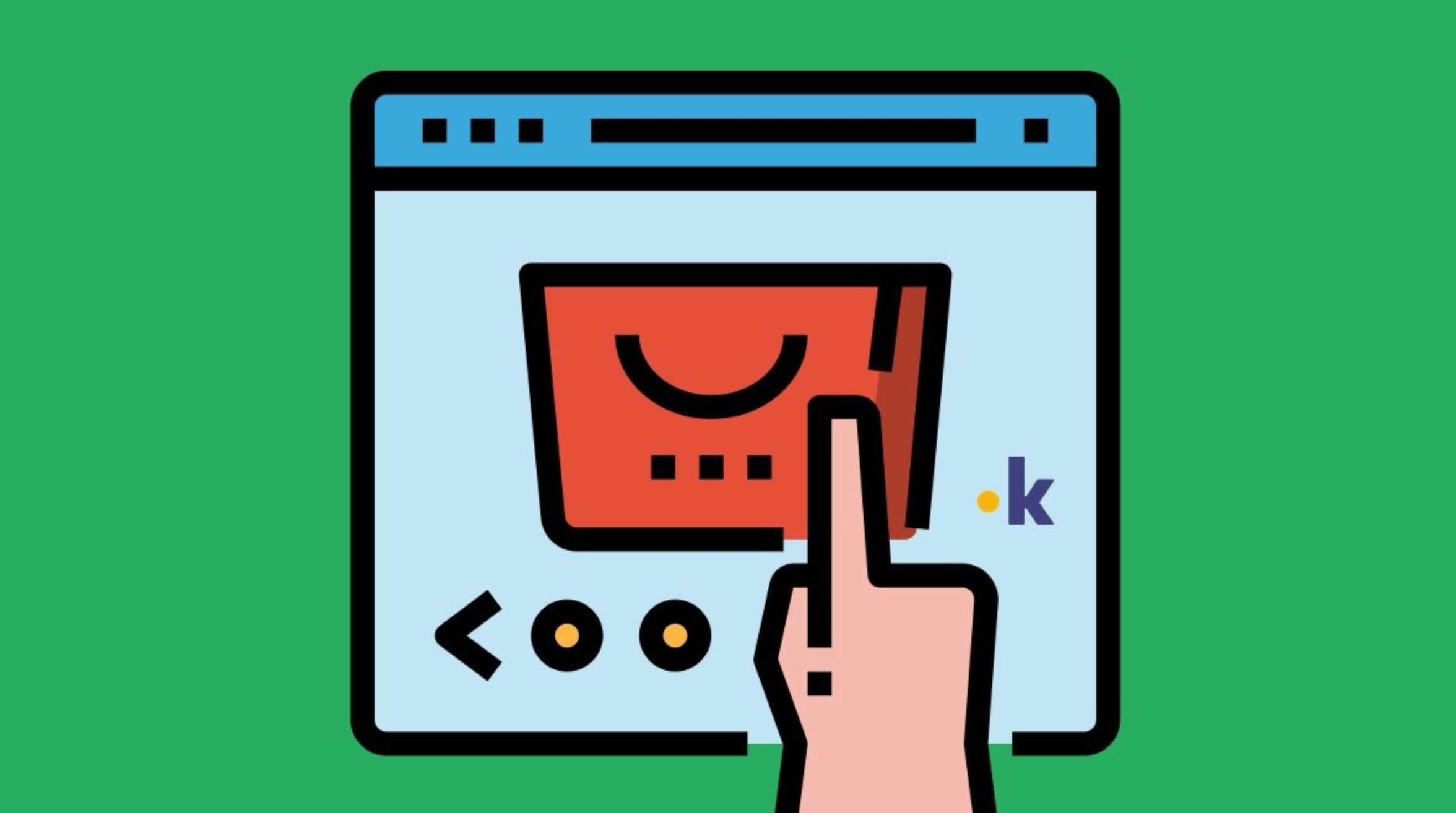
Amazon is a behemoth in the e-commerce world, and selling products on this platform can be incredibly lucrative if done right. This ultimate guide is designed to take you through the various stages of establishing a successful Amazon business, from setting up your online presence to scaling and dealing with challenges. We'll cover crucial topics such as product selection, listing optimization, marketing strategies, and compliance with Amazon's policies, providing you with comprehensive insights to thrive in this competitive marketplace.
Key Takeaways
Identify and focus on a profitable product niche to stand out in the crowded Amazon marketplace.
Craft compelling product listings with optimized titles, descriptions, and keywords for better SEO.
Utilize Amazon's FBA program to streamline shipping and handling, and implement strategies to win the Buy Box.
Leverage Amazon's advertising tools and external traffic to boost product visibility and drive sales.
Stay informed about Amazon's policies, manage customer service effectively, and continuously adapt to platform changes.
Setting the Stage: Crafting Your Amazon Presence
Choosing the Right Product Niche
When I first started selling on Amazon, I quickly realized that finding my niche was crucial. It's not just about what you want to sell; it's about finding a gap in the market where your products can truly shine. To do this, I had to get into the minds of my potential customers and understand their needs and desires.
One strategy that worked for me was analyzing market trends and customer behavior. Here's a simple list I followed:
Research current market trends using tools like Google Trends.
Identify gaps in the Amazon marketplace.
Evaluate the competition within potential niches.
Consider the profitability and scalability of the niche.
Remember, the goal is to find a niche that aligns with your interests and business goals while also being sustainable in the long term.
After settling on a niche, I dedicated myself to understanding it inside out. This meant keeping up with industry news, joining relevant communities, and always being on the lookout for new product ideas that could meet the evolving needs of my customers. It's a continuous learning process, but it's also what keeps me ahead of the game.
Creating Compelling Product Listings
When I first started selling on Amazon, I quickly realized that the key to catching a shopper's eye is a compelling product listing. Your listing is your storefront, and it's what makes the difference between a pass and a purchase. To nail it, I focus on a few crucial elements:
A catchy title that includes essential keywords
A clear and concise bullet point list highlighting the top features
A detailed product description that tells a story
Remember, your product description isn't just a list of features; it's your chance to connect with your customers. Use it to explain the benefits of your product and how it can solve their problems or improve their lives. And don't forget to sprinkle in some SEO magic by naturally integrating keywords that your potential customers are searching for.
The magic is in the details. It's not just about what your product is, but how it fits into your customer's life.
Lastly, pricing is crucial. I always keep an eye on my competition and price my products competitively while still ensuring a good profit margin. It's a delicate balance, but when you get it right, it's incredibly rewarding.
Optimizing for Amazon SEO
When I first started selling on Amazon, I quickly realized that mastering Amazon SEO was crucial for my products to be seen. It's all about understanding how the algorithm works and using that knowledge to your advantage. The key is to optimize your listings to align with what customers are searching for.
One of the most effective strategies I've adopted is focusing on relevant keywords. These aren't just any keywords, but those that potential buyers are actually typing into the Amazon search box. By incorporating these terms into my product titles, descriptions, and backend search terms, I've seen a significant boost in visibility.
Here's a quick rundown of things to keep in mind:
Use high-volume keywords in your product title.
Include synonyms and related terms in your bullet points.
Don't forget the backend keywords that aren't visible to customers.
Monitor your Amazon sales rank to gauge performance.
Remember, it's not just about getting to the top of the search results page; it's about staying there. Consistency in updating your listings and keeping an eye on search trends is vital.
Navigating through the search filters and understanding how they affect visibility can also be a game-changer. It's a continuous learning process, but once you get the hang of it, you'll see your products climb up the rankings.
Leveraging High-Quality Images and Videos
Let's be real, when I'm shopping online, the first thing that grabs my attention is the imagery. It's no different for our customers on Amazon. High-quality images and videos can make or break a sale. They're not just eye-candy; they're a crucial part of the story we're telling about our products.
Visual content is key to standing out in a crowded marketplace. Here's a quick rundown of what I focus on to make my product listings pop:
Professional Product Photos: Clean, high-resolution images from multiple angles.
Lifestyle Shots: Images that show the product in use, helping customers visualize it in their own lives.
Infographics: Quick, informative visuals that highlight key features and benefits.
Product Videos: A short clip that demonstrates the product in action or showcases its unique selling points.
Remember, the goal is to create a visual experience that's as close to a real-life shopping experience as possible. That means no blurry or pixelated images, no confusing angles, and definitely no misleading representations.
By investing in top-notch visual content, I've seen a significant uptick in engagement and, ultimately, conversions. It's a game-changer, folks.
Mastering the Amazon Marketplace Mechanics

Understanding Amazon's Fee Structure
When I first started selling on Amazon, I quickly realized that understanding the fee structure was crucial to my success. Knowing what Amazon will charge you for each sale is essential to pricing your products competitively and profitably. There are two main types of fees you'll encounter: referral fees and closing fees.
Referral fees are like a commission Amazon takes for selling on their platform. These fees are based on your product's category and usually start at 2%, but can vary. For instance, electronics might have a different rate compared to clothing. It's important to check the specific referral fees for your products' categories to avoid any surprises.
Closing fees, on the other hand, are fixed amounts that Amazon charges based on the price of the item sold. This fee is added on top of the referral fee and can impact your margins if not accounted for properly. Here's a quick breakdown of how these fees might look:
Item Price Range | Referral Fee (%) | Closing Fee ($) |
|---|---|---|
$0.01 - $10.00 | 8% | $1.00 |
$10.01 - $25.00 | 15% | $1.50 |
$25.01 and up | 15% | $2.00 |
Remember, these fees are just part of doing business on Amazon. They're how Amazon makes money and provides the platform and services we use. It's our job as sellers to factor these into our pricing strategy to ensure we're still making a profit after all is said and done.
Navigating the Fulfilled by Amazon (FBA) Program
Diving into the Fulfilled by Amazon (FBA) program can feel like stepping into a whole new world of e-commerce. It's a game-changer for how I manage logistics and customer service, freeing up my time to focus on growing my business. But it's not just about convenience; it's about leveraging Amazon's massive distribution network to my advantage.
How To Sell On Amazon From Nigeria In 2024 might seem daunting at first, but with FBA, geographical boundaries become less of a barrier. Here's a quick rundown of what I've learned about the program:
Costs: FBA isn't free, and understanding the fees is crucial. They include storage fees, fulfillment fees, and optional services like labeling.
Inventory Management: Keeping track of what I have in Amazon's warehouses is key to avoiding stockouts or overstocking.
Prime Eligibility: Products in FBA automatically become Prime-eligible, which can significantly boost sales.
Returns: Amazon handles returns, which can be a double-edged sword. It's convenient, but I need to keep an eye on the reasons for returns to ensure product quality.
Remember, the goal is to make FBA work for you, not the other way around. Strategize your inventory and pricing to maximize the benefits while minimizing the costs.
While FBA can streamline operations, it's important to stay informed and adapt to changes. For instance, the Amazon Seller Fulfilled Prime: The Complete Guide for Sellers [2023] is a resource I found invaluable for understanding the nuances of the program.
Staying on Top of Inventory Management
I've learned that keeping a close eye on my inventory is crucial for maintaining a healthy Amazon business. It's all about finding that sweet spot where you're not overstocked, risking excess storage fees, and not understocked, risking stockouts and lost sales. Proper inventory management can make or break your success on the platform.
One of the first things I do is regularly log in to Amazon Seller Central. From there, I navigate to the 'Inventory' section and select 'Manage Inventory' from the drop-down menu. This allows me to monitor my stock levels and plan ahead for restocking.
Keeping a buffer stock is a strategy I swear by. It's a safety net that helps me avoid the dreaded 'Running out of Inventory' scenario.
Here's a quick checklist I follow to ensure I'm on top of things:
Review inventory levels weekly
Analyze sales patterns and adjust inventory accordingly
Set up alerts for low stock levels
Coordinate with suppliers for timely restocking
By sticking to these practices, I've managed to avoid many of the common pitfalls associated with inventory management on Amazon.
Winning the Buy Box: Strategies and Tips
I've learned that winning the Amazon Buy Box is crucial for boosting sales, and it's not as elusive as it might seem. It's all about understanding the game and playing it right. Here's what I focus on to stay ahead:
Price competitively: Keep your prices in line with or slightly below your competitors without sacrificing profit margins.
Maintain high seller metrics: Performance is key. Amazon favors sellers with high ratings, low order defect rates, and fast shipping times.
Stock availability: Always have enough inventory to meet demand. Running out can mean losing the Buy Box.
Customer satisfaction: Prompt and friendly customer service goes a long way in maintaining a positive seller reputation.
Remember, it's not just about having the lowest price. Customer experience is a huge part of the equation. I keep a close eye on my metrics, because they tell me where I stand. If you're not measuring, you're not marketing!
Consistency is the name of the game. Regularly check your performance against the Buy Box criteria to ensure you're on track.
By focusing on these areas, I've seen a significant increase in my Buy Box share. It's a continuous effort, but well worth it when you see those sales numbers climb.
Boosting Visibility and Sales with Marketing Techniques

Harnessing the Power of Amazon Advertising
I've learned that to really make a splash on Amazon, you can't ignore the power of Amazon Advertising. It's like having a megaphone in a crowded room – it helps your products get noticed. The key is to optimize your campaigns for maximum impact.
Here's a quick rundown of the top strategies I've picked up along the way:
Start with automatic targeting to gather data
Analyze the performance and then switch to manual campaigns
Use negative keywords to refine your audience
Adjust bids based on the product's life cycle and seasonality
Continuously monitor and tweak your ads for performance
Remember, it's not just about getting clicks; it's about converting those clicks into sales. That's the real measure of success.
By following these steps and keeping a close eye on your campaigns, you'll be able to see what's working and what's not. And trust me, there's always room for improvement. Whether it's tweaking your bid amounts or refining your target keywords, every little change can make a big difference.
Utilizing External Traffic Sources
I've learned that driving traffic to my Amazon listings doesn't have to be confined to the platform itself. Diversifying traffic sources is key to increasing visibility and sales. By tapping into external traffic, I'm not only boosting my product's exposure but also reaching potential customers who may not be frequent Amazon shoppers.
Here's a quick rundown of the external channels I've found effective:
Social media platforms like Facebook, Instagram, and Pinterest
My own website or blog, leveraging SEO for organic reach
Email marketing campaigns to engage with my subscriber base
Collaborations with influencers and content creators
Remember, the goal is to create a seamless customer journey from these external channels to your Amazon listings. It's about crafting a narrative that guides potential buyers, making the transition as natural as possible.
Each of these channels requires a different approach, but the payoff can be substantial. By strategically directing traffic to my Amazon listings, I'm not just waiting for customers to stumble upon my products; I'm actively guiding them there.
Engaging with Customer Reviews and Feedback
I've learned that engaging with customer reviews and feedback is not just about monitoring what's being said; it's about actively participating in the conversation. Responding to reviews, both positive and negative, shows that I care about my customers' experiences. It's a chance to thank them, to offer support, and sometimes, to learn from their insights.
Feedback is a goldmine for product improvement. I make it a habit to analyze reviews for common themes and address any recurring issues. This proactive approach not only improves my product but also demonstrates to customers that their opinions are valued and taken seriously.
Here's a quick rundown of methods I've found effective in getting those all-important Amazon reviews:
Use Jungle Scout's Review Automation feature
Click the “Request a Review” button on Amazon
Enroll in the Amazon Vine Program
Implement targeted follow-up email campaigns
Remember, while it's tempting to focus on the quantity of reviews, the quality of feedback can be far more impactful. Genuine, thoughtful responses can turn a one-time buyer into a loyal customer.
By staying engaged and showing that I'm committed to excellence, I've seen a noticeable uptick in both the quantity and quality of the reviews I receive. It's a continuous cycle of improvement that benefits everyone involved.
Running Promotions and Lightning Deals
I've found that running promotions and Lightning Deals can be a game-changer for boosting sales on Amazon. It's all about timing and understanding the dynamics of customer behavior. When I schedule a Lightning Deal, I make sure it coincides with high-traffic periods to maximize visibility.
Here's a quick rundown of the steps I follow:
Head over to Amazon Seller Central and select the 'Deals' dashboard.
Choose 'Create a new deal' and pick 'Lightning Deal'.
In the 'Product Details & Pricing' section, locate the product I want to promote.
Set the deal price and quantity, ensuring it's an attractive offer.
Submit the deal for review and wait for approval.
Remember, the key is to offer a discount that's compelling enough to create a sense of urgency but still allows for a healthy profit margin.
It's crucial to keep an eye on the performance during the deal period. I adjust future promotions based on the insights gained, always aiming to learn and improve. And let's not forget, while Lightning Deals can spike sales, they should be part of a broader marketing strategy to sustain growth.
Maintaining Momentum: Scaling Your Amazon Business

Expanding Your Product Line
Once I've established a solid footing on Amazon with a few successful products, I start thinking about growth. Expanding my product line is a natural next step, but it's not just about adding more products; it's about strategic expansion. I focus on complementary items that can cross-sell with my existing products or on new items that target similar customer segments.
Market research is crucial here. I look at customer buying habits, trends, and competitor offerings to identify potential new products. I also consider the logistics: Can my current supply chain handle more products? Do I need new suppliers or manufacturers?
It's essential to maintain a balance between diversifying my offerings and ensuring that I can manage the increased complexity in inventory and marketing.
Here's a quick checklist I use when considering new products for my Amazon store:
Analyze current product performance
Research customer demand and trends
Evaluate supply chain readiness
Calculate potential profit margins
Plan for marketing and launch strategies
Exploring Amazon's Global Marketplaces
When I first considered taking my Amazon business international, I was both excited and a bit overwhelmed. The potential to reach customers across the globe was enticing, but I knew I had to approach it strategically. Expanding into Amazon's global marketplaces can be a game-changer, but it's not without its challenges.
One of the first things I did was research the most promising markets for my products. I looked at consumer trends, local competition, and the unique demands of each region. Here's a quick list of factors I considered:
Consumer purchasing power
Local market trends
Language and cultural barriers
Shipping logistics and costs
Remember, each Amazon marketplace operates slightly differently, with its own set of rules and regulations. It's crucial to understand these nuances to avoid any hiccups.
After selecting the markets, I focused on localizing my product listings. This meant translating and adapting my content to resonate with the local audience. I can't stress enough how important it is to invest in quality translations—poorly translated listings can do more harm than good. And let's not forget about customer service; being responsive and helpful in the local language goes a long way in building trust.
Taking my business global with Amazon has been an incredible journey. With careful planning and a willingness to adapt, I've been able to tap into new customer bases and significantly boost my sales. If you're ready to take that leap, prepare thoroughly, be patient, and stay committed to learning and adjusting as you go.
Using Data Analytics for Strategic Decisions
I've learned that in the Amazon marketplace, data is king. It's not just about having the numbers; it's about understanding them and making informed decisions. By applying analytics to my sales and customer data, I've been able to identify trends and patterns that inform my strategic choices. For instance, I can pinpoint which products are my best sellers and which ones aren't meeting expectations, allowing me to adjust my inventory and marketing efforts accordingly.
One of the most valuable aspects of data analytics is the ability to optimize pricing. I use historical sales data to determine the best price points for my products, ensuring I'm competitive yet profitable. Here's a simple breakdown of how I've adjusted prices over time for a particular product line:
Quarter | Average Price | Units Sold |
|---|---|---|
Q1 2020 | $29.99 | 500 |
Q2 2020 | $27.99 | 750 |
Q3 2020 | $25.99 | 1000 |
Q4 2020 | $23.99 | 1250 |
Supplier data is another goldmine. By applying analytics here, I've been able to make more strategic decisions about which suppliers to stick with and which to phase out. It's all about leveraging that data to reduce costs and improve product quality.
Remember, the goal is to use data not just to react to the market, but to predict and shape future trends. That's how I stay ahead of the curve.
Finally, I can't stress enough the importance of regularly reviewing and acting on customer feedback. This qualitative data is crucial for product development and customer satisfaction. It's a direct line to understanding what my customers want and how I can serve them better.
Building a Recognizable Brand
I've learned that building a recognizable brand on Amazon isn't just about slapping a logo on my products and calling it a day. It's about creating a consistent and memorable experience for my customers. Your brand is your promise to your customer, and it's what sets you apart in a crowded marketplace.
Start with a compelling brand story that resonates with your audience.
Ensure your brand visuals are consistent across all product listings.
Develop a tone of voice that reflects your brand's personality.
Remember, a strong brand builds trust, and trust translates to repeat customers and word-of-mouth referrals.
It's not just about the immediate sale; it's about fostering loyalty and recognition. When customers start searching for my brand name instead of just the product type, that's when I know I've made it. And let's be honest, seeing my brand name in someone's search bar? That's the dream, right?
Navigating Challenges and Staying Compliant

Dealing with Common Seller Issues
Let's face it, selling on Amazon isn't always a walk in the park. I've had my fair share of hurdles, and I know I'm not alone. From unexpected stockouts to listing hijacks, the challenges can be as diverse as the marketplace itself. But don't worry, I've learned that with a bit of know-how, these issues can be managed, if not entirely avoided.
Inventory management is a beast in its own right. Keeping the right balance of stock can feel like a tightrope walk. Too much, and you're bleeding storage fees; too little, and you're missing out on sales. It's crucial to monitor your inventory levels closely and adjust your ordering frequency and quantities accordingly.
Customer service is another area where many sellers stumble. Remember, a happy customer is a repeat customer. Addressing concerns promptly and effectively can turn a potential negative review into a positive experience. Here's a quick list of common customer issues and how to tackle them:
Product not received: Confirm shipment details and offer a replacement or refund if necessary.
Item not as described: Clarify any misunderstandings and provide additional information or compensation.
Returns and refunds: Have a clear policy in place and handle requests swiftly.
Staying ahead of these challenges is key to maintaining a healthy seller account and keeping your business on an upward trajectory.
As for policy compliance, it's a moving target. Amazon updates their rules frequently, and it's on us to stay informed. Ignorance isn't bliss here; it's a fast track to account suspension. Keep an eye on official communications and seller forums to stay in the loop.
Understanding Amazon's Policies and Avoiding Suspensions
Navigating Amazon's marketplace can sometimes feel like walking through a minefield of policies and regulations. I've learned that the key to avoiding suspensions is to stay informed and proactive. Understanding the rules is just the beginning; it's about integrating them into every aspect of your business operations.
One of the most critical steps I take is to regularly review Amazon's Seller Code of Conduct and the various policies on product authenticity, safety, and intellectual property. It's not just about avoiding the pitfalls; it's about building a foundation of trust with both Amazon and my customers.
When it comes to suspensions, I've seen many sellers panic, but there's a structured approach to handle them:
Understand the reason for the suspension
Craft a plan of action (POA)
Submit a clear and concise appeal
Monitor communication channels for updates
Remember, every suspension has its context, and a well-thought-out response can be the difference between reinstatement and a permanent goodbye.
By keeping a close eye on my account health, responding promptly to notifications, and ensuring that my listings comply with Amazon's guidelines, I've managed to steer clear of major issues. It's about diligence and a commitment to excellence that keeps my business thriving on Amazon.
Handling Returns and Customer Service Like a Pro
Let's face it, returns are an inevitable part of selling on Amazon. But here's the kicker: how you handle them can make or break your reputation as a seller. Navigating the return process with grace and efficiency is key to maintaining customer satisfaction. It's not just about refunding money; it's about creating a positive experience that encourages customers to shop with you again.
Customer service is your frontline in building lasting relationships. Quick responses, a helpful attitude, and a clear understanding of Amazon's policies are your best tools. Remember, a happy customer is a returning customer—and they often bring friends.
Handling returns promptly and professionally can turn a potentially negative experience into a positive one, reinforcing customer trust.
Here's a quick rundown of steps to ensure you're on top of your game:
Familiarize yourself with the latest Amazon Seller Return Policy updates.
Set up an efficient system for processing returns quickly.
Communicate clearly and empathetically with customers.
Keep detailed records of all interactions and transactions.
Staying informed about policy changes is crucial. For instance, the title: Amazon Seller Return Policy: 2024 Changes for FBA has been a hot topic lately. Being up-to-date means you're prepared, and preparation is the bedrock of excellent customer service.
Keeping Up with Amazon's Evolving Platform
As I've grown with my Amazon business, I've learned that staying agile is key. Amazon's platform is constantly changing, and it's crucial to adapt quickly to new features and policies. I make it a habit to regularly check the Seller Central news, participate in seller forums, and attend Amazon webinars.
Adaptability is not just a buzzword; it's a survival skill on Amazon. Here's a quick list of things I do to stay ahead:
Keep an eye on policy updates to ensure compliance
Experiment with new tools and services offered by Amazon
Network with other sellers to share insights and strategies
Remember, what worked yesterday might not work tomorrow. Embrace change, and use it to fuel your growth.
By treating Amazon as a dynamic ecosystem rather than a static sales channel, I've been able to pivot when necessary and continue to thrive. It's all about being proactive rather than reactive. So, roll up your sleeves and dive into the ever-evolving world of Amazon with enthusiasm and a willingness to learn.
Wrapping It Up: Your Amazon Success Story Awaits!
And there you have it, folks! We've journeyed through the ins and outs of selling on Amazon, and now you're armed with the knowledge to turn your entrepreneurial dreams into reality. Remember, success on Amazon doesn't happen overnight, but with persistence, a keen eye for detail, and a dash of creativity, you'll be well on your way to becoming a top seller. Keep experimenting, stay updated with Amazon's ever-evolving marketplace, and most importantly, keep your customers smiling. We can't wait to see your products fly off the virtual shelves. Happy selling!
Frequently Asked Questions
How do I find the most profitable niche for selling products on Amazon?
To find a profitable niche, conduct thorough market research to identify demand patterns, search for niches with less competition, and consider your interests and expertise. Utilize Amazon's Best Sellers, Trending Products, and other tools to gauge what's currently popular and profitable.
What makes a product listing compelling on Amazon?
A compelling product listing includes a clear, concise title, a detailed product description, bullet points highlighting key features, high-quality images, and videos if possible. It should also incorporate relevant keywords for Amazon SEO and provide all necessary information to inform and persuade potential buyers.
How can I optimize my products for Amazon SEO?
Optimize your Amazon product listings by researching and using relevant keywords in your titles, descriptions, and bullet points. Take advantage of Amazon's backend search terms, and ensure your product is categorized correctly. Encourage positive reviews and maintain a high seller rating to improve visibility.
What are the best strategies for winning the Amazon Buy Box?
To win the Buy Box, maintain competitive pricing, ensure your products are in stock, offer Prime shipping, strive for high seller performance metrics, and have a good history of customer service. Also, consider using automated repricing tools to stay competitive.
What are the most effective ways to advertise my products on Amazon?
Effective Amazon advertising strategies include using Sponsored Products, Sponsored Brands, and Sponsored Display ads. Target relevant keywords, set competitive bids, and monitor your ad performance closely. Also, consider using Amazon DSP for retargeting and reaching audiences off Amazon.
How can I expand my Amazon business internationally?
To expand internationally on Amazon, research the demand in different markets, understand local regulations and taxes, and enroll in Amazon Global Selling. Use FBA Export to handle logistics, and create localized listings with language and